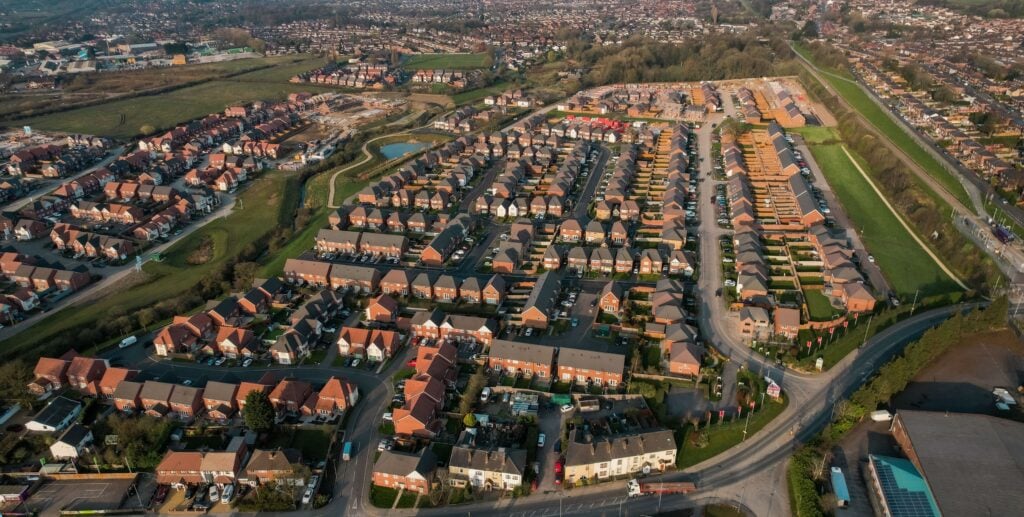HomeRise, a nonprofit housing developer that has received more than $200 million in grants and loans from the city of San Francisco, declares on its website that its mission is “to help people experiencing homelessness secure housing and become self-sufficient.”
However, in April, an independent audit revealed questionable spending of the organization’s funds. While the scope of inappropriate spending was not clear due to incomplete record-keeping, the audit found that most of the grant money went toward staff salaries, including large bonuses that violated the city’s grant agreement.
Some cities allocate billions of dollars in public funding each year to nonprofit housing developers. The nonprofit sector has long played an important role in the development and maintenance of affordable housing, and multiple studies demonstrate that a greater share of nonprofit-built housing is affordable to the lowest-income households when compared to for-profit developments utilizing public land or city-backed financing.
But HomeRise is just one recent example of fraudulent spending and corruption in the nonprofit housing space. State regulation and enforcement of nonprofit organizations run the gamut across jurisdictions, but there are often few safeguards to prevent the misuse of taxpayer dollars.
Sometimes, the problem goes deeper than wasted funding. In some nonprofit housing developments, tenants have complained of unlivable conditions and unresponsive management. Lobbying groups with ties to some nonprofits have also blocked affordable housing initiatives or projects proposed by other developers in an attempt to protect the organization’s funding, which was often ultimately spent on pay raises for high-level executives rather than the public good.
Amid a worsening shortage of affordable homes, many states and cities are allocating funds to nonprofit housing organizations in an attempt to increase the supply of affordable units. Some states are directing funding from some federal housing grant programs exclusively to nonprofits. The Biden administration has also taken steps to ensure nonprofit housing organizations receive priority bidding on foreclosed properties and U.S. Department of Housing and Urban Development (HUD)-held vacant property mortgage notes.
While many of these nonprofit organizations serve the public interest, a mission-driven organization isn’t inherently more trustworthy than a for-profit developer, and regulators should seek to improve oversight to prevent fraud.
When Profit Is Still the Goal
The residents of Hotel Isabel are accustomed to rats and insects. They hear them in the walls and find them in their food. But their repeated complaints to management are often ignored. In their building, and the other seven affordable buildings in the San Francisco metro area owned by the Tenants and Owners Development Corporation (TODCO), a nonprofit that receives multimillion-dollar government contracts, complaints about infestations, heating, and mold have been frequent over the last several years.
Though there’s been more than a twofold increase in annual revenue for TODCO’s primary nonprofit over the past decade, the organization hasn’t developed a new property in 20 years, and spending on tenant services as a share of revenue fell from 62% in 2012 to only 45% in 2020. Like HomeRise, TODCO used some of the money to line the pockets of its top executives, more than tripling their salaries in an eight-year period. But the nonprofit also funneled the extra cash into lobbying and political spending.
In some cases, the money went to causes that align with the organization’s stated mission, such as capping office development to make space for more affordable housing. But in others, TODCO spent money obstructing other developers’ plans, including projects that would provide more affordable units.
For example, in 2018, TODCO received more than a $98,000 settlement from the developer of a mixed-used building over concerns that the project would cast shadows on the Alice Street Community Gardens. Some speculate the lawsuit was merely an attempt to collect a bribe.
In 2020, a TODCO political ally persuaded the land use committee to delay construction for a project that would provide 350 affordable units so that the nonprofit could complete a racial equity study, but TODCO never followed through. And in 2021, a TODCO affiliate appealed the approval of another development that would include 100 affordable units, and the Board of Supervisors postponed the project indefinitely.
TODCO’s excuses for preventing affordable housing developments seemed superficial to critics, especially as the nonprofit neglected its current tenants. The goal, it seemed, was to boost the organization’s profits by keeping San Francisco rents high. Most of TODCO’s tenants pay rent equal to 30% of their monthly income, and government subsidies cover the difference between affordable rent and fair-market rates. That means TODCO collects more money when area rents are elevated due to supply constraints.
TODCO isn’t the only nonprofit housing organization that has lobbied against initiatives that would increase the supply of affordable housing. The Housing Development Consortium (HDC), a lobbying organization for some of the largest nonprofit housing developers in Seattle, opposed a ballot initiative that would provide social housing in the city by establishing a public development authority. “We are concerned that the initiative distracts our community from investing in and supporting existing community-based nonprofits,” HDC said in a statement. In other words, its members would get less funding.
Nor are TODCO’s tenants the only residents to suffer untenable living conditions at the hands of a nonprofit landlord. When an improperly registered Ohio-based nonprofit, the Better Housing Foundation, used $14 million in government-backed, low-interest financing to purchase apartment buildings on Chicago’s South Side in 2016, tenants began complaining of such horrendous conditions that the Chicago Housing Authority eventually restricted aid recipients from moving into many of the units. The deals were approved with little scrutiny, and the nonprofit failed to provide the social services it promised, regularly suing to evict rent-delinquent tenants instead.
And when the Allen Fremont Plaza in Portland was sold to Reach Community Development, one of the largest nonprofit housing developers in Oregon, the building began to deteriorate. Insect infestations, homeless encampments in common spaces, a shortage of working bathrooms, and other issues led several residents to file lawsuits.
In some cases, nonprofits begin projects with good intentions, lacking the experience to maintain safe, healthy living spaces. A third-party management company unfamiliar with the organization’s mission can sometimes cause problems. But the evidence is clear: Nonprofit landlords can be a nightmare for tenants, and cities shouldn’t assume that a mission-driven organization is more capable of, or even more committed to, providing quality living conditions for tenants than a for-profit developer.
A High Risk of Fraud
A lack of government oversight of nonprofits means there’s little assurance that taxpayer dollars are being spent appropriately. Many jurisdictions don’t even have the equivalent of one full-time staff member to oversee charities, some don’t require nonprofits to register, and only 22 states require independent financial audits, most with a high revenue threshold, according to a study published in 2016.
Because state governments are primarily responsible for overseeing nonprofit organizations, HUD also has relatively weak control over how the money disbursed to states through its affordable housing programs is spent. A 2023 report from the Government Accountability Office (GAO) exposed the weaknesses and concluded there was a concerning risk of fraud among developers, many of which are nonprofits, that receive money from the Housing Trust Fund. For example, the program requires developers to submit independent audits to state housing agencies, but states failed to enforce the rule in most of the projects the GAO examined.
Sometimes, public housing staff are complicit in the misuse of housing funds. Earlier this year, federal prosecutors brought charges of bribery and extortion against 70 bad actors working for the New York City Housing Authority, who had accepted bribes from contractors. More than $13 million in funding was inappropriately doled out by agency employees who received more than $2 million in kickbacks, the latest in a series of allegations of corruption against the country’s biggest public housing authority.
But other times, employees responsible for distributing public housing money to nonprofit developers may be unclear of the rules or lack the resources to ensure compliance. Nonprofit status may provide a false sense of trust, and a gross misuse of funds may occur before anyone detects that the organization isn’t what it claims to be.
Some instances of nonprofit housing fraud just this year include:
- A San Francisco nonprofit serving the homeless collected at least $105,000 in city funding based on fraudulent invoices.
- The former CEO of a San Bernardino-based nonprofit developer allegedly embezzled more than $225,000 in federal grant funds to pay for personal expenses.
- A Detroit nonprofit housing director was charged in connection with a deed fraud scheme that took homes from low-income residents. The director even resides in one of the stolen properties.
- The founder of a transitional housing nonprofit in D.C. was charged with money laundering and fraud for diverting at least $150,000 in emergency funding to a private bank account.
A Role for Investors in Nonprofit Partnerships
For-profit developers are sometimes viewed as greed-driven and accused of constructing apartment buildings with units that are only temporarily affordable to take advantage of tax credits or low-cost financing. But some strive to revitalize communities and share a common goal with local nonprofits. For-profit developers and nonprofit housing organizations are often stronger and more efficient when they work together on a project that is both profitable for investors and contributes to the supply of affordable homes for low-income families.
Such partnerships may allow taxpayer money to stretch further. The GAO report found that the average cost per affordable unit was about $40,000 greater for nonprofit development projects when compared to for-profit developments.
While there may be other factors at play, part of this cost difference is likely due to the smaller scale of nonprofit developments. Larger developments have lower per-unit development costs and higher net operating income that qualify them for larger loans, as this tool from the Urban Institute demonstrates. The expertise of for-profit developers may also contribute to lower costs.
Nonprofits bring their own expertise and benefits to the partnership. They may have established relationships with local communities, experience providing resident services, and greater knowledge of subsidies and financing options that make it feasible for a project to include affordable units. In some jurisdictions, developments are only eligible for grants or tax exemptions if a nonprofit is involved in the project. There are several ways to structure a partnership with a nonprofit organization that minimizes challenges while maximizing the positive impact on the local community.
The Bottom Line
Despite these many somber examples of inappropriate spending among nonprofit housing organizations, the takeaway is not that nonprofit developers are just as greedy as for-profit developers. Rather, some people are incentivized by financial gain, even if it means taking advantage of low-income households, and those people find careers in both nonprofit and for-profit sectors. Nonprofit status doesn’t guarantee that an organization’s leadership will act in the best interest of the public.
Governments that provide nonprofit housing developers preferential treatment for funding while also neglecting to scrutinize their spending risk wasting taxpayer dollars, both in higher development costs and fraud.
If you’re interested in investing for the public good, partnering with a nonprofit housing organization might be a good way to accomplish your goal. Just remember to do your due diligence when selecting a reputable nonprofit partner, and structure the partnership to avoid pitfalls.
Ready to succeed in real estate investing? Create a free BiggerPockets account to learn about investment strategies; ask questions and get answers from our community of +2 million members; connect with investor-friendly agents; and so much more.
Note By BiggerPockets: These are opinions written by the author and do not necessarily represent the opinions of BiggerPockets.




